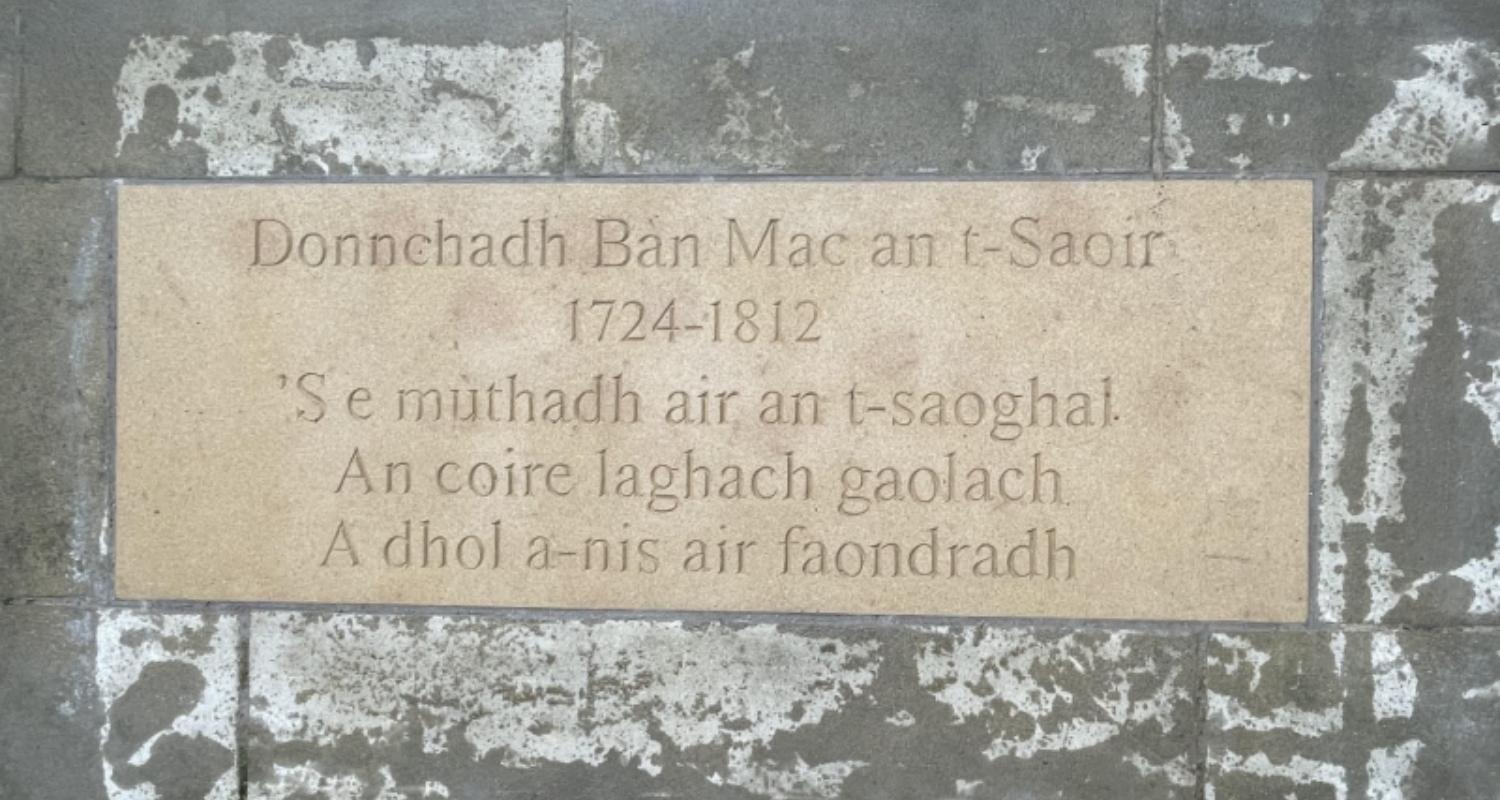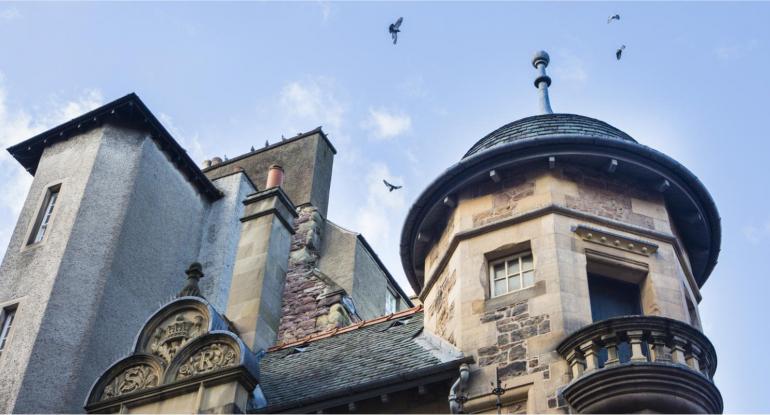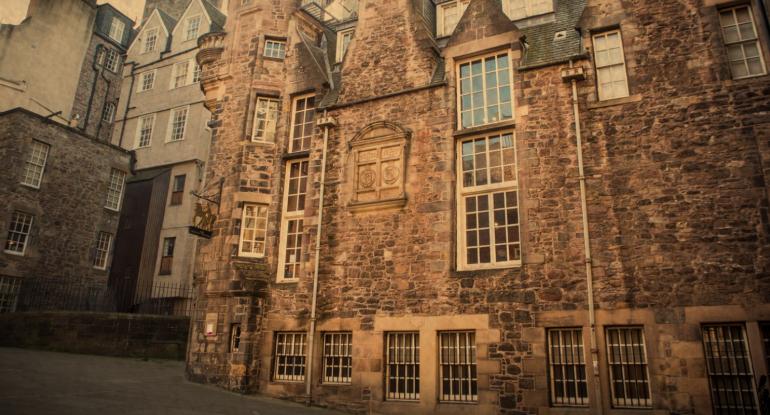Lauded Scottish Gaelic poet Donnchadh Bàn Mac an t-Saoir (anglicised as Duncan Ban Macintyre) has had an inscribed flagstone unveiled yesterday at Makars’ Court in Edinburgh.
Duncan Ban now joins the illustrious company of Sir Walter Scott, Rabbie Burns, Robert Louis Stevenson and others at Makars’ Court where Scotland’s literary greats have been enshrined since 1988. He is widely acknowledged to have formed a key part of the golden age of Gaelic poetry in the 18th century.
Donnchadh Bàn Mac an t-Saoir (Duncan Ban Macintyre) is one of the most famous and best-loved of all Gaelic poets. Although he was not literate, he had a kaleidoscopic vocabulary and extraordinary verbal dexterity.
His songs describe the natural environment of the Gàidhealtachd, especially the deer and other wildlife, in vivid and minute detail. His works also express dismay at the economic and social changes that came over the Gàidhealtachd in his time, as expressed in the song from which the proposed extract is taken, ‘Cumha Coire a’ Cheathaich’ (Lament for Misty Corrie).
Born in Glen Orchy in Argyll in 1724, he served, somewhat reluctantly, on the Hanoverian side during the 1745 Jacobite rising but left in 1746 for employment as a gamekeeper on the Argyll-Perthshire border.
He relocated in 1766 to serve until 1793 in the Edinburgh City Guard, the city’s police force. He died in 1812 is buried in Greyfriars Kirkyard, where he is commemorated by a fine sandstone obelisk.



